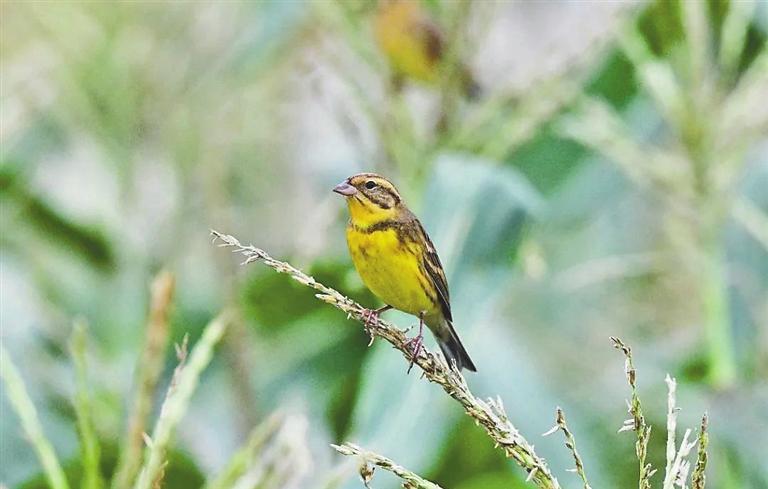Editor's note: Shenzhen is composed of nine administrative districts, one new area, and the Shenshan Special Cooperation Zone in Shanwei. While all 11 areas share Shenzhen's defining spirit of innovation, each has its own unique characteristics. This page spotlights the encouraging results of Guangming District's ecological efforts. The green oasis in northwestern Shenzhen boasts a rich diversity of flora and fauna, including various trees, flowers, and wildlife. Despite rapid economic development, the district maintains a healthy ecological balance, preserving stunning landscapes and abundant biodiversity.
In a recent discovery that has thrilled nature enthusiasts, a documentary photography team led by journalist-turned-entrepreneur Wen Zhengbing has uncovered new evidence of nationally protected species thriving in Guangming District.
Among the remarkable findings are Angiopteris fokiensis, a national second-level protected wild plant, and the glossy ibis (Plegadis falcinellus) and Yellow-breasted bunting (Emberiza aureola), national first-level protected birds.

A glossy ibis
The presence of these protected species not only adds to the biodiversity of the region but also underscores the significant strides Guangming has made in ecological conservation. Forest parks like Hongqiao Park serve as vital havens for wildlife, showcasing the rich tapestry of nature within urban environments.
Led by Wen and his dedicated team, the survey searched the forests, overcoming challenges to document these species.
The glossy ibis (Plegadis falcinellus) is a captivating bird species known for its chestnut plumage and shimmering hues. These social birds primarily inhabit warm bodies of water, foraging on aquatic insects and small invertebrates. Once thought to have disappeared for decades in China, recent sightings in regions like Sichuan and Guangdong point to a resurgence, albeit amidst declining habitats.
The yellow-breasted bunting, Emberiza aureola, is a small passerine of the bunting family Emberizidae. It is a bird of considerable charm, with the breeding male adorned in bright white underparts contrasted by black flank streaks, a brown back, and a striking black face and throat bar. The lower mandible is a delicate pink. Females are more subdued in coloration, with a heavily streaked grey-brown back and less vibrant yellow underparts. Their faces are whitish with dark crown, eye, and cheek stripes. Juveniles share a resemblance to females but have a buff background to the underparts and face.

A yellow-breasted bunting
As of 2015, due to factors such as excessive human trapping, intensified pesticide use, and habitat loss, adult yellow-breasted buntings in Europe numbered only 120-600 individuals. They are classified as critically endangered (CR) by the International Union for Conservation of Nature (IUCN) and are considered a national first-level protected species in China.
Angiopteris fokiensis is found in southern China, from the warm tropical zone to the tropics of Hainan Island. It can be grown outdoors in the mildest areas of the temperate zone, but would need greenhouse protection elsewhere. It is an evergreen fern with fronds that can be two to four meters long. The plant is sometimes harvested from the wild by locals for use as a medicine.

Angiopteris fokiensis
















